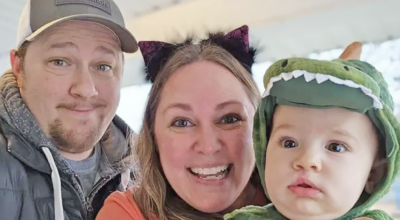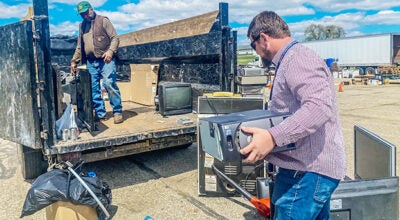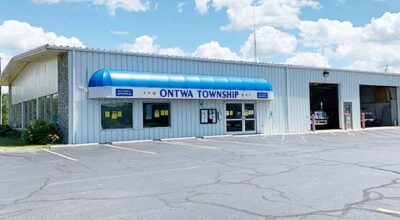A glimpse into fort life
Published 9:40 pm Thursday, August 11, 2011
Members of the community gathered on the bank of the St. Joseph River at Bond and Fort streets early Thursday morning for a sneak peak of what’s to come at the annual Fort St. Joseph open house.
In attendance were Niles Mayor Mike McCauslin and his contender in the upcoming election, City Councilman Tim Skalla, community development director Juan Ganum and public works director Neil Coulston, along with Fort St. Joseph Museum director Carol Bainbridge and many others, all of whom watched as re-enactors played out a scene believed to be a common occurrence at the site so many years ago.

Daily Star photo/JESSICA SIEFF Members of the media and the Niles community were invited to a preview and official opening of Fort St. Joseph on Thursday. The site’s annual open house will be held Saturday and Sunday from 10 am. to 4 p.m.
A small boat cut through the river’s calm waters, stopped at a clearing and re-enactors performed what could have been a typical trade deal during the sites life as a trading post in the late-1690s.
“The theme for our program this year,” announced Michael Nassaney, principal investigator for the Fort St. Joseph Archeological Project, “is the fur trade.”
Nassaney addressed a small crowd of media and community members prior to the official opening of the site.
“We’ve been learning about trade, economic relationships and social and political relationships as well,” Nassaney said.
Since it was discovered in 1998, Fort St. Joseph has served as a natural and historical classroom for students of Western Michigan University’s archeological project.
A few steps out of the site’s clearing and into its woods, small plots have been meticulously dug up, their treasures small but significant: beads and stones scorched from fire. Each one is a triumph to those students who spend countless hours at the site learning more about the way of life in Niles during colonial times.
Nassaney highlighted the importance of those findings in his remarks Thursday, as well as the partnerships built between the university, the students and the Niles community.
“What they’ve been learning … is also very, very dependent on those close alliances that we’ve been building with so many groups,” he said.
He called the open house Saturday and Sunday “another venue for us to get the word out to the public,” and also noted the Fort St. Joseph Museum’s collection of artifacts.
“It’s a great day to be a member of the Fort St. Joseph Archeological Project,” Nassaney said.
Other speakers at Thursday’s event included LouAnn Wurst, department chair of Western Michigan University Archaeology; field school student Alexander Brand; re-enactors Barb Schwaderer and Robert Myers; Alex Enyedi, dean of the College of Arts and Sciences; and Timothy Greene, provost of WMU.
Since 1998, McCauslin said, “the city has been on an archeological high.”
“We’ve come to know what daily life, clothing and cooking was like for our colonial ancestors,” he said.
McCauslin said he hoped those students and contributors to the project had developed an appreciation for the city of Niles and its people as well as a willingness to return, adding the students bring with them “an infectious enthusiasm” for uncovering the history of Niles’ hidden history at Fort St. Joseph.
The Fort St. Joseph open house will be held Saturday and Sunday from 10 a.m. to 4 p.m. Visitors will have a chance to tour the site, see artifacts on display and see interpretations of colonial life by re-enactors.
For more information, visit www.wmich.edu/fortstjoseph.







